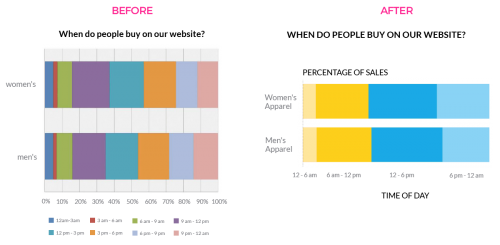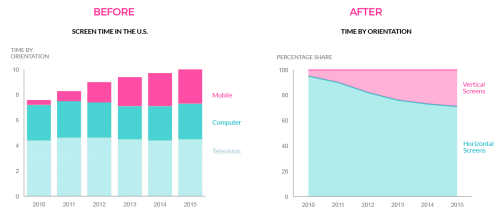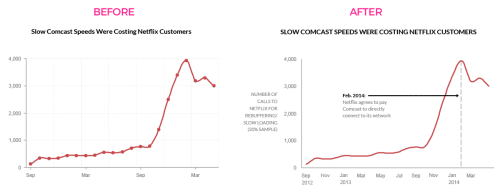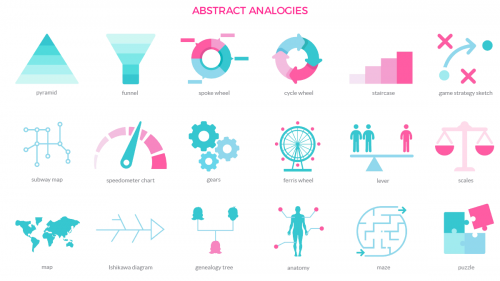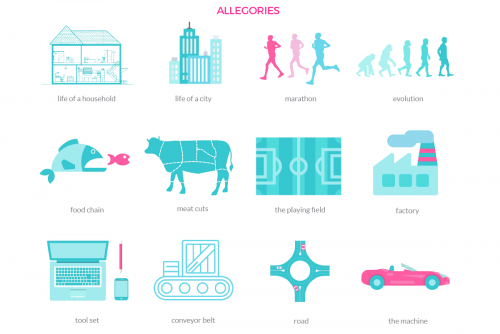Lesson 5: How to create effective charts and diagrams
Contents
- 1 Description
- 2 Module 1: How to Create Persuasive Charts and Graphs
- 3 Module 2: How to Choose the Right Type of Chart for Your Message
- 4 Module 3: Make Your Key Point Stand Out
- 5 Module 4: Use Color to Highlight Key Points
- 6 Module 5: Stick to a Few Colors
- 7 Module 6: Declutter Your Charts
- 8 Module 7: Eliminate Legends When Possible
- 9 Module 8: Types of Diagrams
- 10 Source
Description
Course objectives
This lesson covers how to make the key points in your charts and graphs stand out. Learn about the types of conceptual diagrams you can use to visualize your information. By the end of this lesson, you'll know:
- How to make your charts easier to understand at first glance
- How to use design principles to make your key points stand out
- The types of diagrams you can use to visualize information
- How to use visualizations in the form of allegories and analogies
Co-Author
Module 1: How to Create Persuasive Charts and Graphs
- Resist the urge to immediately choose a chart
- The four types of charts
- Consulting for context before you start creating charts
- How can you use your data to make a point?
- Refine your chart by decluttering
- Limit eye movement from one end of the chart to another
Module 2: How to Choose the Right Type of Chart for Your Message
First, put your ideas down on paper before rushing to choose the type of chart you think would work best. Once you’ve defined what you want your audience to know, you can match some of these keywords to different types of charts, summarized in this handy cheat sheet.
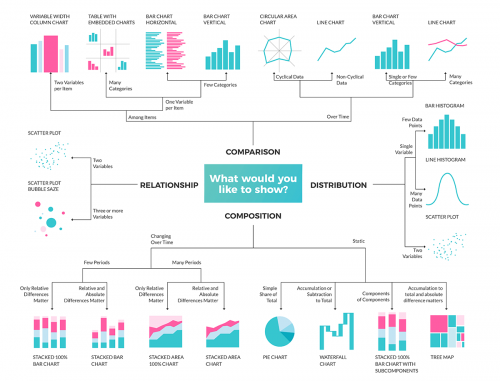
Get the 125-page guide to creating visual slides with impact
Module 3: Make Your Key Point Stand Out
For each element in your chart, ask yourself: “Do I need this to communicate my key message?” If the answer is no, then consider eliminating it.
Ask yourself, “Can this be summarized?” If certain details are not essential, then consider summarizing certain elements by grouping them into broader categories.
Module 4: Use Color to Highlight Key Points
Next, push all chart elements to the background by applying a light grey color. Then go through the most important of these elements, and use different design techniques to make them stand out, such as making the size bigger, making certain lines thicker, applying color, adding data explainers or labels, among others.
Module 5: Stick to a Few Colors
Use only two to three colors to highlight the most important points. Use grey for the rest of information.
In this example, we see how using only two colors (and summarizing information into two groups) make it easier to grasp the key point of this chart.
Module 6: Declutter Your Charts
When possible, do away with chart gridlines and borders. In this example, the chart gridlines are not necessary to understand the key point of this chart, which is that slow Comcast speeds caused a spike in customer calls in 2014.
Module 7: Eliminate Legends When Possible
In order to limit eye movement from one end of the chart to another, eliminate legends when possible and instead label segments, lines or bars directly.
In this case, the chart on the right is labelled directly and, therefore, much easier to read in one glance since the reader does not need to look back and forth between the chart and the legend labels.
Module 8: Types of Diagrams
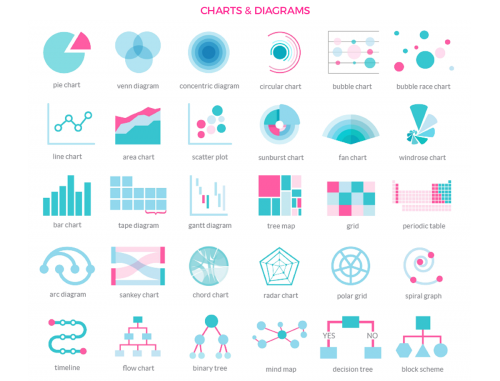
Get Your Presentation Design 101 Badge

